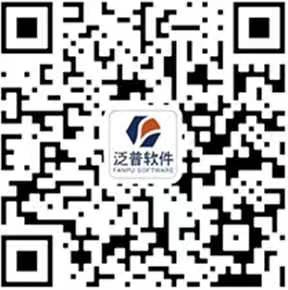Asset4 Measures Corporate Intellectual Capital
Asset4 aims to help institutional investors and hedge funds predict the performance of companies based on factors other than pure financials. According to Peter Ohnemus, founder on Asset4, only 16 percent of a company's performance is linked to financials, the other 84 percent are tied to environmental policy, and social and governance issues (ESG).
Ohnemus and his team have been working for three years to quantify these non-financial factors by creating a database and software based on 250 specific economic ESGs. Statistical algorithm specialists from the Gesellschaft fur Organisation & Entscheidung (GOE), the Swiss Federal Institute of Technology, the International Institute for Management Development, and the Copenhagen Business School assisted in the project. The resultant proprietary system is protected by a number of global patent applications.
Like Bloomberg and Thomson Financial, Asset4 gives information and then lets investors drill down and create their own ratings and rankings, based on specific criteria. The difference with Asset4 is that none of it is financial. "We intend to be the Bloomberg of extra-financial data," says Mr. Ohnemus.
So far, 800 companies are in Asset4's database. By the end of 2007, the company plans to monitor 3,000 major companies - covering about 70 percent of the world's major trading markets.
Among the first companies to use Asset4's theory and technology is US investment bank Goldman Sachs, which announced in mid-2006 that it would not only participate in Asset4's first financial round, but would also incorporate Asset4's ESG data and framework into its own investment research, benchmarking, portfolio monitoring, and risk management processes. Goldman Sachs additionally has committed to marketing the Asset4 system to its own global client base.
"We believe that the Asset4 product offering will have broad applicability across our global investor client base," says Michael Sanders, managing director in the equities division of Goldman Sachs. "It appeals to a range of clients, from institutional investors with socially responsible investment mandates to hedge funds."
Mr. Ohnemus provides an example of non-financial metrics. He notes there is a growing belief in the importance of the ESG issue in a "carbon-constrained world" from banks, assets managers, and pension funds, says Mr. Ohnemus. That is because carbon emissions now cost big companies big money.
"Our software lets you take the 10 largest oil companies and benchmark carbon dioxide emissions per billions of revenue as an investor," states Mr. Ohnemus. "Investors care because the Kyoto Protocol says they will have to pay for carbon dioxide certificates, which is a substantial cost to the bottom line."
To that end, Goldman Sachs will incorporate Asset4 ESG data into its upcoming reports on how the overall environmental performance of leading global corporations has a direct correlation to the share price.
Large pension funds, such as the ABP pension fund in Holland, have already announced that they will be integrating ESG issues into their investment decision processes. And, points out Mr. Ohnemus, investment funds handling over $4 trillion are now supporting the six principles of the United Nation's Principles of Responsible Investing initiative, a commitment from the world's pension funds, mutual funds, and asset managers to integrate ESG aspects in their investment research and investment decision-making processes.
In the future, professional asset managers will have to use a lot more "quant" - quantifiable patterns in the marketplace based on analysis of the correlation of numbers with market trends - in their products to differentiate themselves from the electronically traded funds and justify higher commissions, adds Mr. Ohnemus.
Currently, there are no plans to distribute terminals globally like Bloomberg. Asset4 offers a web-based system that Mr. Ohnemus hopes will grow virally as more asset managers realize that the time has come to embrace ESG.
- 1OA系统满足邮件收发附件存储自定义的需求开发说明
- 2Nikon运用昆明OA信息化系统改进客户服务
- 3浅谈昆明OA办公系统数据整合实现方式
- 4企业昆明OA信息化案例分析之—— IBM(中国)公司
- 5看500强企业如何革新集团管理模式(一)(AMT研究院 刘珺)
- 6普华永道的Kraken与“知识曲线”
- 7浙江省电力试验研究院昆明OA信息化系统案例
- 8北京移动昆明OA信息化案例
- 9中小企业的昆明OA信息化(AMT研究院 鲁玉强 编译)
- 10昆明OA信息化:如何识别与规避风险(一)(AMT研究院 贾文玉)
- 11跨企业协同管理——大势所趋(邓溯锐)
- 12昆明OA信息化平台试用报告
- 13对于KM问题列表:倾听来自企业人士的回答
- 14昆明OA信息化经营的推动经验
- 15【案例征集】大庆油田测试技术服务公司解释计算站昆明OA信息化实施案例(一)
- 16帕拉尔:成功提升知识含量的传统企业
- 17把经验和信息转化为生产力
- 18云计算影响未来颠覆OA系统行业?
- 19施乐公司昆明OA信息化整体解决方案
- 20柏克德公司的昆明OA信息化模式
- 21西门子和施乐教会制造企业什么(二)(AMT研究院 刘珺)
- 22呼叫中心的运行昆明OA信息化困境
- 23IBM昆明OA信息化经验总结
- 24昆明OA信息化:如何识别与规避风险(二)(AMT研究院 贾文玉)
- 25惠普昆明OA信息化与企业文化
- 26昆明OA信息化规划方法(二)(AMT研究院 苏丹)
- 27TCL移动的现实选择:用信息化推进流程再造
- 28柏克德公司的昆明OA信息化
- 29昆明OA信息化三人谈
- 30昆明OA信息化该谁负责
成都公司:成都市成华区建设南路160号1层9号
重庆公司:重庆市江北区红旗河沟华创商务大厦18楼


